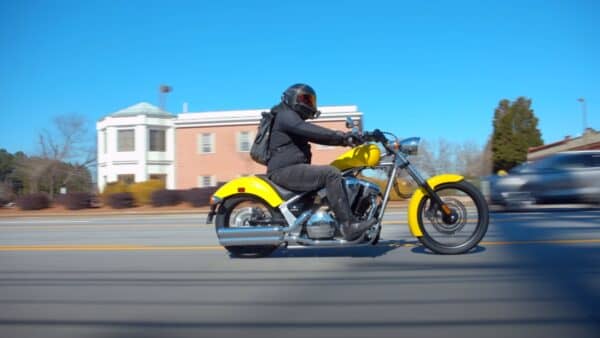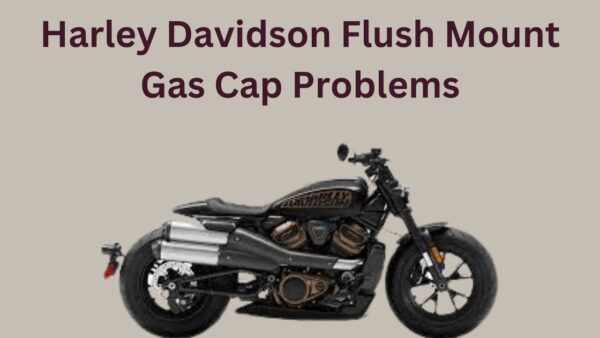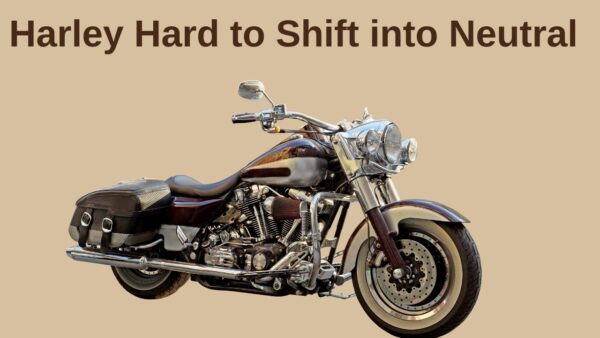The Honda Fury, with its chopper-inspired styling and robust performance, stands out as a remarkable machine in the motorcycling world.

However, even the most reliable of motorcycles can encounter issues, and the Fury is no exception.
In this article, we’ll dive into some of the common problems that owners experience, ranging from minor inconveniences to more substantial mechanical concerns.
Honda Fury Common Problems
A common problem reported is the limited fuel capacity, which can be inconvenient for long rides.
However, some riders experience discomfort due to the bike’s aggressive riding position during extended journeys.
Moreover, some riders reported issues with the uncomfortable seat, hard starting, and lack of storage space.
1. Fuel Pump Issues
The fuel pump is a vital component designed to deliver fuel from the tank to the engine with the right pressure and volume for optimum operation.
When the fuel pump encounters problems, it can result in difficulties in starting the engine, a noticeable decrease in power, and inconsistent throttle response.
The underlying causes of fuel pump issues may range from electrical faults, such as a blown fuse or corroded connections, a clogged filter or a failing pump motor.
To address these concerns, you should begin with a check of the fuel pump fuse and relay, followed by an inspection of the electrical connections for signs of corrosion or damage.
If these components are functional, attention should then turn to the fuel pump itself.
Replacing the fuel pump necessitates draining the fuel tank, removing it, and then accessing the fuel pump assembly for a thorough examination.
It is often recommended to replace the entire pump assembly, as individual components are not typically sold separately.
Moreover, replacing the fuel filter as a preventive measure can help to ensure the longevity and reliability of the new pump.
2. Uncomfortable Seat
One of the most common issues reported by riders is the discomfort experienced with the stock seat during longer rides.
Designed with a sleek and low profile in line with the chopper aesthetic, the seat compromises on ergonomic support and padding.
Riders find that after an hour or so on the road, the lack of proper cushioning and tailbone support leads to significant discomfort and even pain.
This is exacerbated on rough terrain or during extended tours, making frequent breaks a necessity.
To address this issue, it is recommended to consider aftermarket seats that provide improved padding and ergonomic support.
Saddlemen and Mustang are popular brands offering seats designed specifically for the Honda Fury that aim to enhance rider comfort.
These seats often feature multiple layers of foam or gel, contoured designs to distribute weight more evenly, and are shaped to reduce pressure points.
However, installing a seat cover with extra cushioning can be a more budget-friendly solution.
You can also explore the addition of backrests for greater support. It’s important to note that any modifications should not only increase comfort but also maintain the motorcycle’s center of gravity and handling characteristics.
3. Fuel Tank Missing Welds
However, several users have reported an issue particularly related to the fuel tank’s construction of missing welds, a critical manufacturing defect that can lead to serious safety risks.
This problem can compromise the fuel tank’s structural integrity, potentially resulting in leaks that are not only hazardous to the rider but can also lead to engine failure due to fuel contamination or loss of pressure.
To address this issue, you should routinely inspect your fuel tanks for any signs of leakage or irregularities in the tank’s surface that may indicate poor craftsmanship or missing welds.
In the event of discovering such defects, it is essential to stop operating the vehicle immediately to prevent any further damage or risk of injury.
For a detailed guide, you should consult the maintenance manual specifically designed for the Fury or contact a certified Honda motorcycle technician.
4. Hard Starting
This problem can stem from a variety of sources, such as battery malfunctions, faulty spark plugs, or issues with the fuel system.
When a Fury faces difficult starts, it’s essential to check the battery voltage and ensure it’s charging adequately, as a motorcycle requires a strong, healthy battery to turn over the engine efficiently.
Spark plugs should be inspected for signs of wear or fouling and replaced if necessary, as they are key components in igniting the fuel-air mixture within the cylinders.
The fuel system also demands attention, ensuring that there are no clogs in the fuel filter, no air leaks are present, and that the fuel injectors are operating correctly.
5. Poor Fuel Capacity
Several owners often report lower miles per gallon (MPG) compared to other motorcycles in its class.
This challenge can be attributed to the bike’s weight, aerodynamic profile, and the V-twin engine configuration.
The Fury’s engine is designed for a more substantial torque output, which naturally can result in less efficient fuel consumption, especially under aggressive riding conditions or constant high speeds.
To mitigate the problem, you should maintain consistent throttle inputs, use the recommended grade of engine oil, and ensure proper tire inflation.
Understanding the fuel demands of your motorcycle and modifying riding habits can go a long way in improving overall fuel economy.
You should also look to maximize your MPG and may also explore aftermarket solutions that enhance the bike’s performance and efficiency.
6. Lack Storage Space
One prevalent issue Honda Fury owners face is the scant storage capacity that the motorcycle offers.
The Fury, with its sleek lines and chopper styling, sacrifices practical storage options for aesthetic appeal.
This can present challenges for riders who need to carry essentials such as repair kits, personal items, or even light luggage for longer rides.
Without standard saddlebags or storage compartments, finding ways to transport items safely and securely becomes a concern that necessitates aftermarket solutions.
You should often turn to custom saddlebags, tank bags, or small luggage racks as alternatives, which, while practical, may detract from the motorcycle’s overall appearance.

Ahtsham Younas is a passionate blogger and content writer. He loves to ride motorcycles and learn the mechanical process behind the motorcycles.
He has been writing articles in the motorcycle industry since 2019 and has learned many things about motorbike niches.


